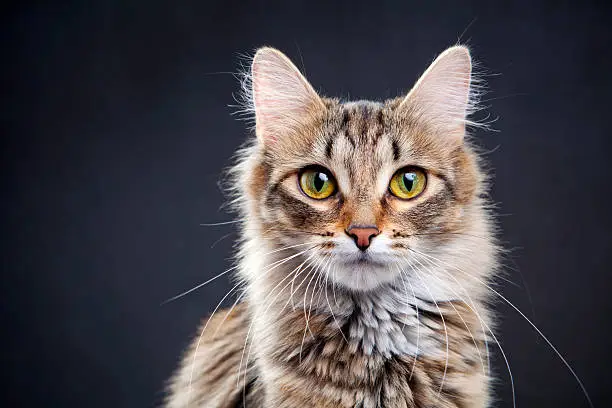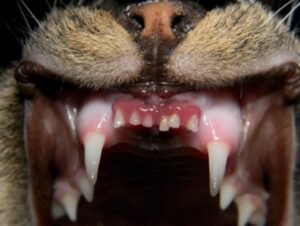
Cats with dental disease are frequently misdiagnosed, possibly because getting them to the doctor is difficult! Older animals are more likely to have diseases affecting teeth and gums. Although this is true for some conditions like tooth resorption or advanced periodontal disease, young cats can also develop teeth and gum disease which can cause smelly breath. There are two distinct periods during which significant oral inflammation can occur in juvenile cats.
Occasional Inflammation in Kittens
Occasional oral inflammation can be observed around the time of kitten vaccinations. It is uncertain whether this inflammation is an immune response to the vaccine components or a result of the eruption of deciduous teeth, leading to increased levels of dental plaque. Generally, this inflammation is temporary and tends to improve with better oral hygiene practices. In cases where there is overgrowth of the gums (a.k.a. gingival enlargement), a gingivectomy may be necessary to resolve the issue (surgical removal of excessive gum tissue).
Period 2 of Oral Inflammation Once Adult Teeth Start Erupting
The second period associated with increased levels of oral inflammation is when the permanent teeth start to emerge. This is a common time for significant gingival inflammation to occur, even in healthy cats. Cats with lesions extending beyond the muco-gingival junction require intensified oral hygiene measures to both alleviate the inflammation and prevent long-term tissue changes such as gingival recession or gingival hyperplasia.
We can therefore classify feline juvenile gingivitis in two distinct presentations.
Juvenile onset hyperplastic gingivitis
Juvenile onset hyperplastic gingivitis is an inflammatory condition that affects the gums of young cats when their teeth start to emerge. Scientists still do not know the cause of this condition, and they have not documented its frequency. However, it tends to become less common after approximately two years of age. Cats affected by this condition experience significant gum inflammation, characterized by redness, swelling, and easy bleeding during chewing or oral examination. The gums also enlarge, forming pockets where excessive gum tissue covers the tooth crowns. Interestingly, affected cats don’t show signs of pain, and the back part of their mouth (caudal oral mucosa) remains unaffected.
Siamese, Somali, Maine Coon, Persian, and Abyssinian cats have a genetic predisposition to be affected. Treatment typically involves early dental cleaning, consistent daily oral care, and gingivectomy to remove the pockets and reduce inflammation. Some patients may require frequent dental cleanings every three to six months. With appropriate treatment, the symptoms and smelly breath can improve. However, if left untreated, the condition usually progresses rapidly, leading to tooth loss and possibly chronic stomatitis.
Juvenile Onset Periodontitis
Juvenile onset periodontitis is observed in cats under nine months of age, primarily in Siamese, Maine Coon, and Domestic Shorthaired cats. Affected cats experience rapid accumulation of plaque and calculus, leading to gingivitis, significant early bone loss, formation of periodontal pockets, gum recession, and furcation exposure. The worst affected areas are the mandibular first molar teeth and mandibular incisor teeth, which often become loose. Halitosis (bad breath) is commonly present during tooth eruption.
Treating and managing this condition is challenging, and extraction of severely affected teeth is often necessary. Managing the disease requires early dental cleanings starting around nine months of age, followed by regular cleanings every six to nine months. Diligent home oral care is essential to control plaque. Radiographic assessment is valuable for assessing bone loss and diagnosing early tooth resorption, which frequently occurs at sites of periodontal inflammation.
Further research is needed to determine if these cats will eventually exhibit signs of Feline Chronic Gingivostomatitis (FCGS).
For more information on this disease or to book your appointment, please call our team at Carefree Dentistry and Oral Surgery for Animals 623-377-5050.


